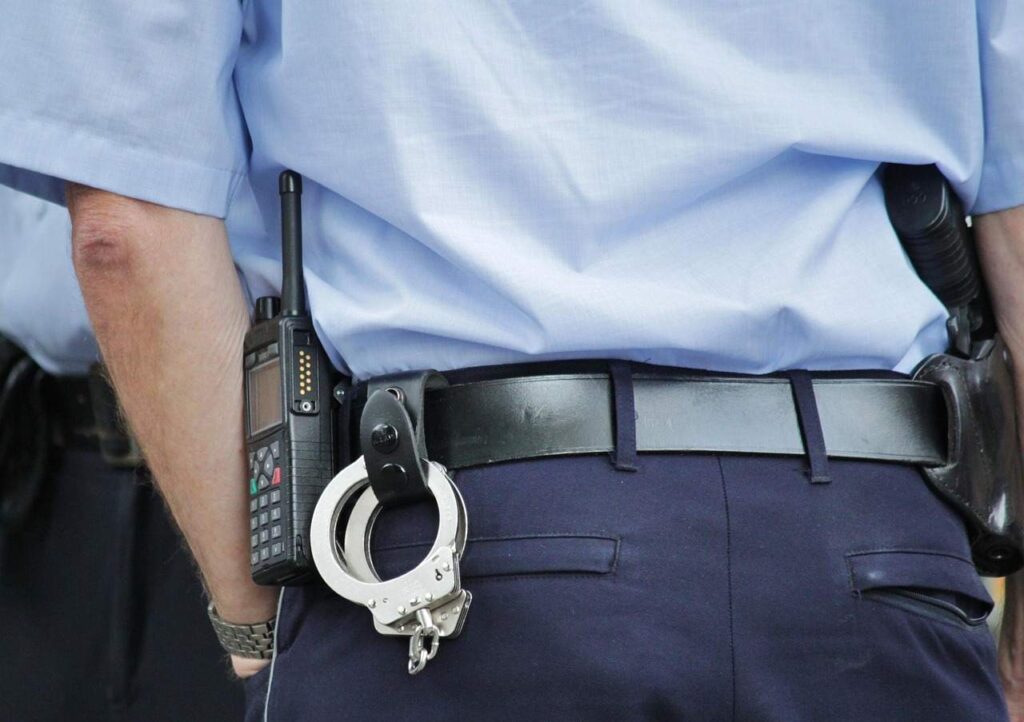What Is a Warrant in Alberta?
In Alberta, a warrant is a legal document issued by a judge or justice of the peace that authorizes law enforcement officers to take a specific action—such as arresting an individual, entering a property, or searching for evidence. Warrants are fundamental tools used to ensure that police activity respects the Charter rights of individuals while enabling effective law enforcement.
Types of Warrants Commonly Issued in Calgary
1. Arrest Warrants – These are issued when an individual is accused of committing a criminal offence, such as impaired driving, but has not yet been apprehended. A judge or justice must be satisfied that there are reasonable grounds to believe the person committed the offence. Once issued, an arrest warrant authorizes the Calgary Police Service (CPS) or RCMP to locate and arrest the individual.
2. Bench Warrants – These are commonly issued when a person fails to appear in court as required—often in impaired driving cases where the accused misses a court date at the Calgary Provincial Court or Court of King’s Bench. A bench warrant can lead to immediate arrest and detention until the person is brought before a judge.
3. Search Warrants – These allow police to enter private property—such as a home, office, or vehicle—to search for evidence related to a criminal offence. In impaired driving investigations, search warrants may be used to obtain surveillance footage, blood samples, or electronic records.

Judicial vs. Police-Issued Documents
While all formal warrants must be authorized by a judicial officer, certain investigative tools—like roadside breath tests or Approved Screening Devices (ASDs)—can be used by police under statutory authority without a warrant. However, these do not allow for arrest or entry into a dwelling unless a warrant has been granted.
How Warrants Are Issued Through Calgary Courts
In Calgary, warrants are typically issued after an Information (sworn statement by police) is presented to a justice of the peace or a provincial court judge. For example:
- Arrest warrants are often processed at the Calgary Courts Centre located at 601 5 Street SW.
- Bench warrants may be issued in open court if an individual fails to appear at their scheduled hearing.
- Search warrants require detailed affidavits outlining the grounds for entry and must adhere strictly to the Charter of Rights and Freedoms.
A Calgary impaired driving lawyer can play a critical role in reviewing the validity of a warrant, especially if there are concerns about unlawful search and seizure or procedural errors. Challenging an improperly issued warrant can lead to the exclusion of evidence or dismissal of charges.
Common Reasons for Warrants in Calgary
Failing to Appear in Court for Impaired Driving or Related Charges
One of the most common reasons for a bench warrant in Calgary is failure to appear (FTA) for a scheduled court date—particularly in cases involving impaired driving. If you’re charged with a DUI and miss your first appearance at the Calgary Provincial Court, the judge will almost certainly issue a bench warrant for your arrest. This remains active until you are either arrested or voluntarily appear before the court with legal representation.
An active FTA warrant can:
- Result in arrest during routine traffic stops or border crossings
- Negatively impact your chances of securing bail in the future
- Be viewed by the court as an indication of unreliability
Hiring a Calgary impaired driving lawyer promptly after missing court can help mitigate these consequences, often by filing a motion to quash the warrant and arrange a new appearance.
Breaching Bail or Probation Conditions
Another major reason for warrants in Calgary is the breach of bail conditions or probation orders. Common conditions in impaired driving cases may include:
- No alcohol consumption
- Curfews
- No driving
- Regular check-ins with a bail supervisor
If police believe you have breached any of these conditions, they can apply for a warrant to arrest you and return you to court. In some cases, breaches are accidental or based on misunderstandings, but the consequences are serious. A breach can result in:
- Revocation of bail
- Stricter release terms (e.g., surety supervision)
- Additional charges under the Criminal Code of Canada
Probation breaches, which typically occur after a conviction, also trigger warrants. These are handled seriously by Alberta courts, especially if the original charge involved impaired driving or repeat offences.
New Criminal Allegations Including DUI or Driving While Prohibited
A new criminal charge—particularly driving while prohibited, refusing a breath sample, or a second impaired driving charge—may also result in a fresh arrest warrant. If police have sufficient grounds to believe you’ve committed a new offence, they may request a warrant if immediate arrest isn’t possible.
This can apply in cases where:
- You were previously convicted and are caught driving while your licence is suspended
- Surveillance, witness statements, or digital evidence link you to a recent incident
- You are under investigation but have not yet been formally charged
In such situations, Calgary police may execute the warrant at your home or workplace, leading to embarrassment and legal complications.
What Happens If There’s a Warrant for Your Arrest in Calgary?
Calgary Police Service Procedures Upon Issuing a Warrant
Once a warrant is issued by a judge or justice of the peace, the Calgary Police Service (CPS) enters the warrant into a province-wide database. Officers may actively attempt to locate you if the warrant is tied to a serious offence such as impaired driving causing bodily harm, but even lower-level charges can trigger enforcement action.
Key steps the CPS may take include:
- Visiting your last known address or workplace
- Checking in with known associates
- Adding your name to national and provincial police databases (e.g., CPIC)
If located, you may be arrested on the spot and transported to the Arrest Processing Unit (APU) in downtown Calgary, where you’ll be held until a bail hearing or court appearance is scheduled.
How Warrants Show Up During Routine Traffic Stops or Border Crossings
Even if police are not actively searching for you, an outstanding warrant will surface during any interaction with law enforcement. The most common scenarios include:
- Routine traffic stops (e.g., for speeding or expired registration)
- Checkstops or roadside sobriety tests
- Crossing into Canada at international borders
- Applying for a new driver’s licence or identification
In these cases, the officer will run your identification through the system. If the warrant appears, they are legally obligated to arrest you immediately—even if the underlying charge is minor or outdated.
This is especially risky in impaired driving cases where:
- Your licence may already be suspended or restricted
- You are in breach of bail or probation conditions
- You’ve previously missed a court date
Being arrested during a traffic stop or border crossing can be stressful and result in your vehicle being impounded, missed flights, or public embarrassment.
The Risk of Being Taken Into Custody Without Warning
Perhaps the most troubling part of an arrest warrant is the element of surprise. You may be unaware that a warrant even exists—until you’re suddenly taken into custody in front of family, coworkers, or during daily activities. Once arrested, you may face:
- Detention overnight or over the weekend if court is not in session
- Tight timelines for obtaining bail, especially if the offence involved a breach or prior failures to appear
- Delays in securing legal counsel if arrested outside business hours
How to Find Out If You Have a Warrant in Calgary
Contacting Calgary Courts or Checking With a Calgary Impaired Driving Lawyer
One of the most reliable ways to find out if there’s an active warrant is by working with a Calgary impaired driving lawyer. A lawyer can:
- Contact the Calgary Provincial Court or the Court of King’s Bench on your behalf
- Inquire with the Crown prosecutor’s office
- Review police records and court documents to check for any judicial orders
Lawyers have access to legal channels that the public does not, and they can obtain this information discreetly without exposing you to immediate arrest.
You can also contact Calgary court services directly by phone, but court staff may not be able to confirm whether a warrant exists over the phone for privacy and security reasons. In-person inquiries are possible—but risky.
Risks of Checking In Person vs. Through Legal Counsel
Visiting a courthouse or police station in person to check for a warrant may seem like a logical step, but it comes with significant risks. If an active warrant is discovered during your visit:
- You can be arrested on the spot
- You may be taken into custody immediately, especially if court is in session
- Your vehicle or belongings may be seized, depending on the situation
This is especially common when individuals check on their status without legal representation and are unaware of their rights or the potential consequences.
Why Proactive Action Can Reduce the Severity of Consequences
Taking action before you’re arrested on a warrant gives you a strategic advantage. If you discover a warrant exists and address it early:
- You may be released on an undertaking rather than held for bail
- Your lawyer can prepare documentation and explanation for the court (e.g., reasons for missing a court date)
- You reduce the likelihood of harsh bail conditions or custody
Quashing a Warrant: What Are Your Options?
How Lawyers Can File to Revoke or Quash a Warrant in Calgary Provincial Court
The legal process of “quashing” a warrant means asking the court to cancel it, often by filing a revocation application. This is a formal request that your lawyer submits to the Calgary Provincial Court, outlining why the warrant should no longer stand.
Common reasons that support a warrant revocation include:
- You were unaware of the court date or mistakenly believed you didn’t need to appear
- You missed court due to emergency medical issues, family circumstances, or miscommunication
- The breach of bail conditions was technical or non-violent in nature (e.g., missed curfew by 10 minutes)
The motion is typically heard in front of a judge, and your lawyer will advocate on your behalf, explaining your circumstances and proposing a plan for moving forward—such as attending all future dates or adhering more strictly to bail terms.
If the judge is satisfied with the explanation and sees no risk to public safety, the warrant may be quashed and your case can proceed without arrest.
Preparing a Reasonable Explanation for Missing Court or Breaching Terms
To successfully quash a warrant, context matters. Your lawyer will work closely with you to prepare a credible explanation supported by documentation wherever possible. For example:
- A doctor’s note confirming illness on the day of court
- Emails or phone records showing attempts to confirm your court date
- Proof of confusion around scheduling due to legal representation changes
In impaired driving cases, courts may be more forgiving if it’s a first offence and there’s no indication of evasion or deliberate non-compliance. The key is to demonstrate good faith and a willingness to take responsibility.
Your lawyer may also advise preparing a plan of compliance—a written outline of how you will avoid future breaches or missed appearances. This can improve your standing with the judge.
Presenting Yourself Voluntarily With Legal Representation
Voluntarily addressing a warrant—especially with a lawyer by your side—makes a strong impression in court. It shows that you are taking the matter seriously and want to resolve it legally and respectfully.
Benefits of voluntary appearance include:
- Avoiding arrest at home, work, or during routine traffic stops
- A higher chance of being released on your own recognizance rather than being held for a bail hearing
- Improved credibility with the court and Crown prosecutor
Why You Should Contact a Calgary Impaired Driving Lawyer Immediately
Protecting Your Rights Before Arrest or Court Proceedings
The earlier you speak to a lawyer, the better your chances of preserving your Charter rights and avoiding procedural missteps. A criminal defence lawyer can:
- Confirm whether a warrant exists without exposing you to arrest
- Advise you on what not to say to police or court staff
- Ensure your arrest, if necessary, is handled in a controlled and respectful manner
If the warrant is related to impaired driving, there may be additional risks—such as vehicle seizure, licence suspension, or the loss of employment due to criminal allegations. Your lawyer will explain how to safeguard your legal interests and navigate the Alberta court system with confidence.
Reducing the Risk of Jail Time or Additional Charges
A warrant left unaddressed can escalate the situation quickly. You may face:
- Additional Criminal Code charges (e.g., failure to appear, breach of recognizance)
- Tougher bail conditions, including curfews, supervision, or even house arrest
- Pretrial custody if the court views you as a flight risk or repeat offender
By intervening early, your lawyer can often negotiate with the Crown to avoid these outcomes. They may arrange for a voluntary court appearance, file a motion to quash the warrant, and present your case in the most favourable light—potentially reducing or eliminating time spent in custody.
Ensuring Proper Legal Steps Are Taken to Resolve the Warrant Efficiently
Criminal proceedings in Calgary, especially for impaired driving cases, follow strict timelines and procedures. Trying to handle a warrant on your own can lead to mistakes that worsen your situation.
A Calgary impaired driving lawyer will:
- File the appropriate documents to bring your matter before a judge
- Coordinate your appearance in court at the earliest possible date
- Prepare supporting materials (e.g., medical records, compliance plans, character references)
- Argue for your release or discharge with a well-prepared legal position
Most importantly, having a lawyer by your side shows the court that you are taking accountability, which can significantly impact how your case is handled moving forward.

